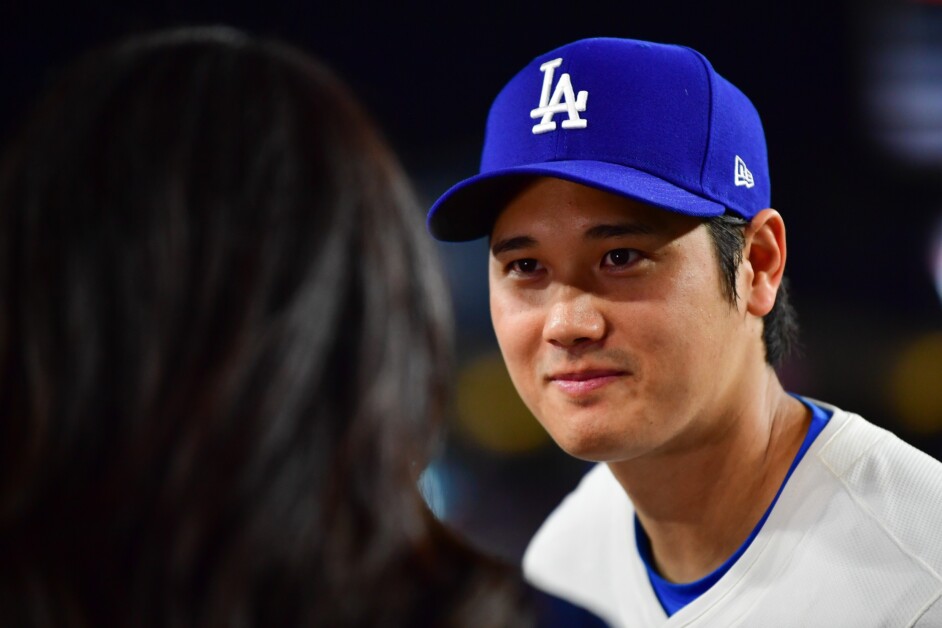Shohei Ohtani’s inaugural home run as a Los Angeles Dodger quickly evolved from a celebratory moment into a contentious situation involving fan Ambar Roman and her husband, Alexis Valenzuela. The memorable event occurred during a game where the Dodgers swept the San Francisco Giants, marking a significant moment for Ohtani and the fans alike.
The controversy ignited when Ambar caught the home run ball, a moment captured on camera as her husband lifted her in celebration. Initially, it seemed to be a joyful incident; however, the situation turned when Dodger security escorted the couple away to negotiate the ball’s return. Under the pressure of the moment and without sufficient time to consider, Ambar agreed to exchange the ball for memorabilia, including two signed hats, an autographed bat, and a ball, not realizing the potentially higher value of the original game ball.
Criticism arose over how the Dodgers handled the negotiation, particularly their decision to isolate Ambar from her husband during the discussions and their insistence that the ball would not be authenticated if she retained it, significantly diminishing its value. The incident sparked debate over fans’ rights to keep game balls, especially those of significant sentimental or historical value.
Despite the initial discomfort and controversy, the situation was amicably resolved. The Dodgers reached out to the couple, promising a unique experience at Dodger Stadium, and a week later, Ohtani met with Ambar and Alexis. The meeting, which coincided with Ambar’s birthday, was described by her as the “best birthday ever,” signaling a positive turn in their relationship with the team.
Ambar’s story highlights the complex dynamics between sports franchises and fan interactions, especially when significant moments like Ohtani’s first Dodger home run are involved. While the Dodgers are favored to succeed this season, this incident serves as a reminder of the delicate balance teams must maintain in managing fan experiences and the legacy of momentous events.
Controversy Hasn’t Impacted Performance
In the face of potential distractions from individual player controversies, the Los Angeles Dodgers have impressively maintained their focus and performance early in the baseball season. Despite Shohei Ohtani’s challenges involving his ex-translator, Ippei Mizuhara, and issues concerning his first home run ball at Dodger Stadium, the team has shown resilience and unity, sits atop the National League West, and according to the latest MLB odds, remains favorites to win the 2024 World Series.
Such incidents could potentially derail a player’s focus and affect team dynamics. However, the Dodgers and Ohtani have navigated these troubled waters with aplomb. Statistically, Ohtani’s performance remains stellar. Less than a month into the season, he posts impressive numbers with a batting line of .338/.384/.648. He has already hit four home runs, driven in 10 runs, scored 15 times, and stolen three bases across 86 plate appearances. His on-field success demonstrates his ability to compartmentalize off-field issues and focus on his game, contributing significantly to the Dodgers’ strong start to the season.
The team’s solid performance, anchored by Ohtani’s contributions, highlights the effectiveness of the Dodgers’ management in maintaining a conducive environment for all players. The coaching staff’s role in ensuring that external controversies do not seep into the clubhouse dynamics has been crucial in their early success.
Can You Keep What You Catch?
In Major League Baseball, it’s quite a spectacle to see a ball soar into the stands, where fans eagerly await the chance to catch a piece of the game. The Society for American Baseball Research has extensively studied the phenomenon, noting that it’s typically within a fan’s rights to keep any ball that lands among the crowd.
At Dodger Stadium, just like any other ballpark, the excitement of catching a game ball is a well-recognized event. Online forums are filled with stories from fans who’ve successfully caught a ball at various stadiums and retained it as a keepsake. The general rule is clear: if a ball lands in the crowd and is not in play, it’s up for grabs unless you actively interfere with the game. A notorious example of interference is the 2003 incident involving fan Steve Bartman during a game between the Chicago Cubs and the Florida Marlins, which resulted in significant uproar and controversy.
Franchises sometimes seek to reclaim balls that have significant sentimental or historical value. This was evident in the recent situation at Dodger Stadium involving Shohei Ohtani’s first home run as a Dodger. The Dodgers approached the fans who caught this historic ball, initially leading to a misunderstanding about what was expected in exchange for the ball. Such incidents underscore the potential complexities of catching a ball with substantial significance.
While about 100 new balls are prepared for each MLB game, fans catching balls should be mindful that if the moment is particularly notable, teams might request the ball’s return, often offering memorabilia or other rewards in compensation. In summary, fans at Dodger Stadium and other venues can generally keep balls that land in the stands. However, if those balls hold exceptional value, they should be prepared for the rare but possible discussions with team management.






